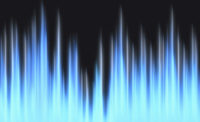 Forbes magazine recently compared two kinds of noise-reducing headphones as they might be used by business travelers.
Forbes magazine recently compared two kinds of noise-reducing headphones as they might be used by business travelers.
Noise cancelling headphones use microphones to listen to the incoming sound then a processing creates inverse waves which get fed back into the headphones. These inverse waves cancel out the ambient sound. One way to think about this is if the ambient noise (an airplane engine, say), is “+1” the headphones create and add “-1” so your ear hears 0 (i.e. nothing).
Noise cancelling works best with low droning sounds, like car engines, airplane engines, air conditioners, etc. Midrange sounds, like voices, are largely unaffected (though they may sound odd as the low frequency parts of their voices are cancelled out).
The best noise cancelling headphones make it seem like you’re just sitting (or standing or whatever) in a quieter place.
Many in-ear and on-ear headphones isolate you from ambient noise. The idea here is a physical barrier between your ear and the offending sounds.
With over-ear headphones, the noise isolation is sufficient to muffle the surrounding sound somewhat.
With in-ear headphones, how much sound they drop is based on how good a seal you can get.
Everyone’s ears are different, and as such, in-ear headphones fit everyone differently. Finding an in-ears that fit you well is key, especially if you want them to block ambient sound well.
Noise cancelling headphones require batteries, though most come with built-in rechargeable ones. They also range in quality. The best work great. Cheap noise cancelling headphones can actually add some noise, in the form of high-frequency hiss.
Noise isolating headphones can muffle everything around you quite well. In-ear models, though, can be like having big ear plugs stuck in your ears.
If you’re not used to in-ear headphones (and I don’t mean the Apple variety, I mean in-ear), check some out before you buy. If you can get a comfortable seal, and they block out the amount of sound you want, awesome. Keep in mind that if you find a pair of in-ear headphones you like, but the tips aren’t perfect, there are different aftermarket tip materials available (foam, rubber, etc), along with different shapes (conical, round, etc). Different noise isolating in-ears will block different aspects of the sound better (or worse) than others.
If you can’t find a perfect fit, the better noise cancelling headphones sadly aren’t cheap, but are excellent.
By Geoffrey Morrison
This article is available online at:
www.forbes.com/sites/geoffreymorrison/2013/09/19/noise-cancelling-vs-noise-isolating-headphones/


